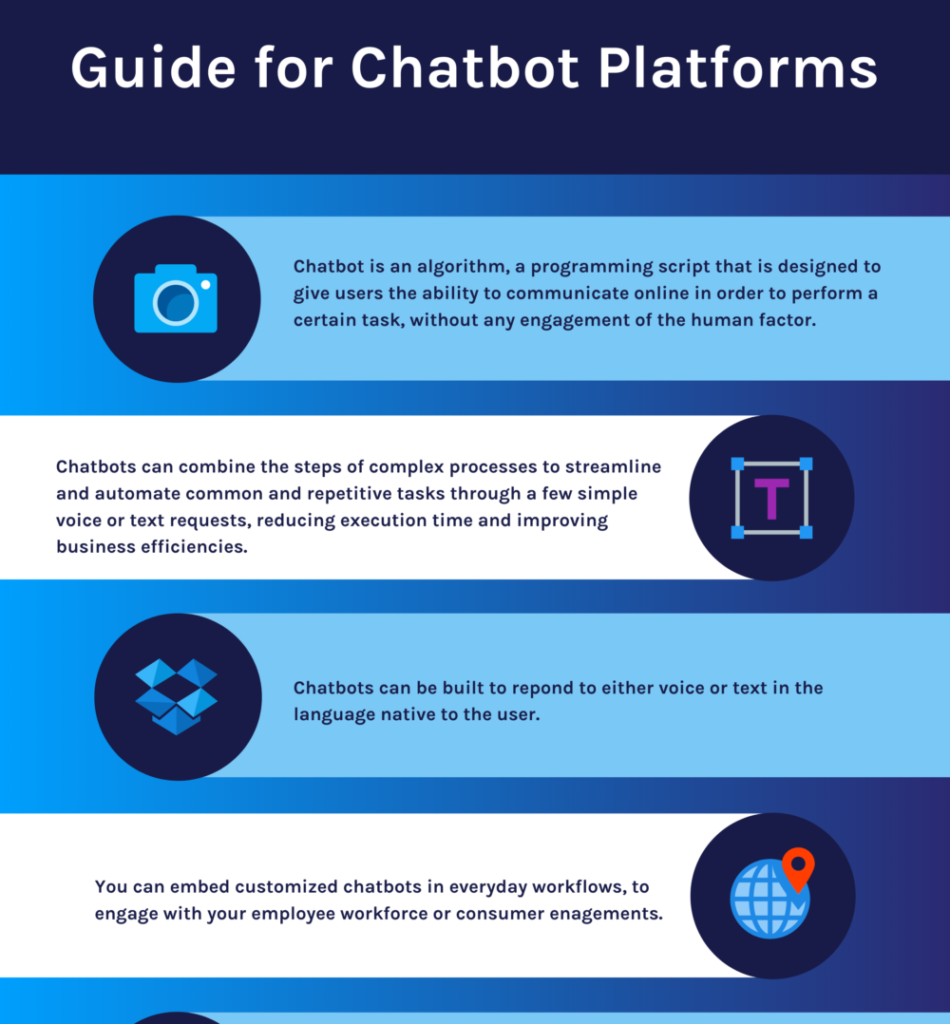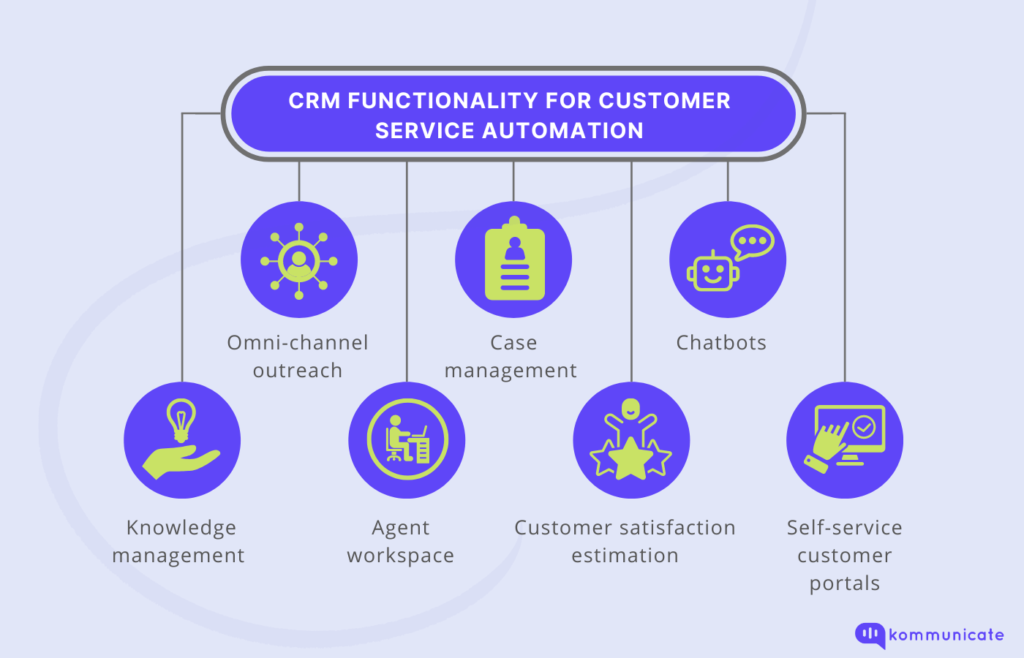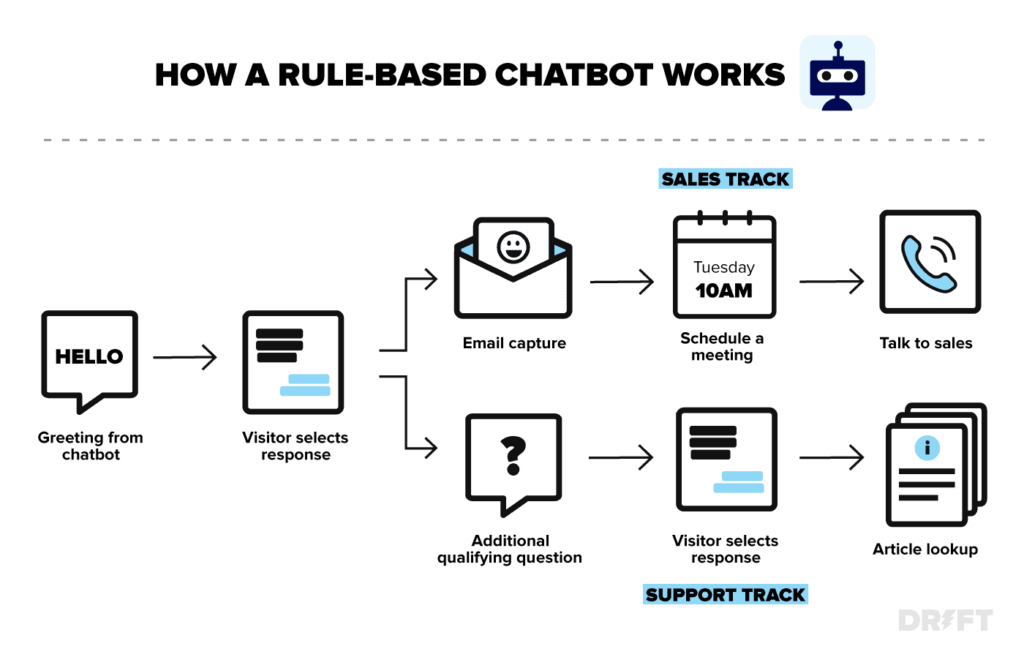Introduction
In the digital era where artificial intelligence (AI) has become an integral part of our lives, it’s important to understand how this technology can be harnessed to enhance business performance.
Understanding the Concept of Chatbots
What are chatbots, you might ask? Well, they are computer programs designed to simulate human conversation. They interact with users, providing answers to queries, offering suggestions, and even performing tasks. They’re like your very own digital personal assistant, helping to take care of daily tasks and communication needs.
The Connection between Chatbots and Cash Flow
Now, you might be wondering, “What do chatbots have to do with cash flow?” Quite a lot, actually! With the correct strategy in place, these AI tools can boost your company’s profitability. How, you ask? Primarily, by improving customer service and sales.
For one, chatbots provide round-the-clock customer service, promptly addressing customer queries anytime, anywhere. This leads to increased customer satisfaction and loyalty, which translate to recurrent business and better cash flow.
Moreover, chatbots can also drive sales. Equipped with machine learning algorithms, they can analyze a user’s data and behavior to provide personalized product or service recommendations, essentially upselling and cross-selling without appearing too pushy.
With chatbots, you get a cost-effective solution that not only bolsters customer service but also automates and enhances sales strategies; a wonderful mixing pot stirring in potential for revenue growth. That’s the beauty of marrying technological innovation with business strategy!
As we dive deeper into this guide, we’ll unravel more about chatbot strategies and how you can effectively monetize AI in your online business. We’ll explore the ins and outs of this fascinating world, ensuring you’re well-equipped to take your business to the next level! So, are you ready? Let’s get started!

This image is property of www.predictiveanalyticstoday.com.
The Evolution of Chatbots
In this section, we delve into the fascinating journey of chatbots, from their humble beginnings to the modern advancements and what the future holds for them.
The birth of chatbots: A historical overview
Chatbots may seem like a relatively new concept, but in reality, the groundwork for this technology was laid more than five decades ago. The idea of creating an interactive software capable of conducting human-like conversations first surfaced in the 1960s with the creation of ELIZA – a computer program designed to mimic human conversation through pattern recognition. This was an early and rudimentary step, yet it laid a massive foundation for contemporary chatbots.
Modern chatbots: Progression and development
The development of chatbots has increased at an exponential rate over the past few years. Modern chatbots, empowered by advancements in artificial intelligence and machine learning, are capable of far more than their predecessors. They can understand and learn from human language, respond to complex queries, and even personalize their interactions based on the user’s preferences. These capabilities make them indispensable tools in today’s online business landscape, from customer service to marketing and sales.
The future of chatbots: Innovations and Predictions
The potential for chatbots in the future looks promising. Advancements in AI and machine learning technologies mean that chatbots will only become smarter and more efficient. Predictions suggest they will be able to fully comprehend and react to human emotions, making interactions with them almost indistinguishable from human ones. Moreover, as virtual and augmented realities become more pervasive, we could witness chatbots integrated within these spaces, offering an even more immersive user experience.
In short, the journey of chatbots is a testament to the relentless drive for innovation and efficiency. As we look to the future, one thing is for sure: the evolution of chatbots is far from over.

This image is property of www.kommunicate.io.
Mechanics of Chatbots
Chatbots have become an integral part of digital strategy, and for good reason. They present businesses with a new way to interact with customers, streamline operations, and even generate revenue. But to really unlock the potential of chatbots, one must understand their mechanisms.
Understanding AI and Machine Learning in Chatbots
AI, or Artificial Intelligence, is the underlying technology that powers chatbots. It gives bots the ability to understand, process, and respond to human language. Machine Learning, a subset of AI, enables chatbots to learn from past interactions and improve over time. For instance, if a customer asks a question the bot hasn’t encountered before, it analyses similar questions it’s interacted with in the past to provide an accurate answer. Machine Learning makes chatbots more efficient and reliable, and it ensures they get smarter with every conversation.
How Do Chatbots Work: An In-Depth Look
A chatbot essentially simulates human conversation. When it receives a message, it performs text analysis to understand the message’s intent and context. It then generates a response based on pre-defined rules or learned data. It’s important to note that chatbots are not perfect — which is why they are often paired with human agents for complex queries.
Different Types of Chatbots: Rule-Based, AI-Based, and Hybrid Bots
Rule-based bots follow predefined rules and respond to specific commands. While they excel at simple tasks, they struggle with complicated requests. AI-based bots, on the other hand, leverage AI & Machine Learning to understand and respond to a variety of queries. The most sophisticated are hybrid bots, which combine the strengths of rule-based and AI-based bots. They are perfect for businesses that need a versatile and reliable solution.
It’s clear to see that chatbots can offer businesses significant value. It’s just about picking the right chatbot strategy for your particular business.

This image is property of botcore.ai.
Chatbots in Business: Pros and Cons
Chatbots have become an essential tool for many businesses, acting as capable customer service representatives that handle inquiries 24/7. In this comprehensive guide to chatbot strategy, we aim to provide a closer look at the benefits and potential challenges companies may face when integrating Chatbots into their businesses.
The significant benefits of Chatbots
One massive advantage of chatbots is their ability to engage visitors immediately on your site, answering their questions regardless of the time of day, increasing customer satisfaction significantly. Moreover, chatbots help to reduce overhead costs that would otherwise go to human customer service representatives, further making them an appealing investment for businesses.
Potential challenges in implementing Chatbots
However, introducing chatbots is not without challenges. Building a bot that can understand and respond to questions effectively requires significant time and resources, including ongoing maintenance to ensure the bot’s continued learning and improvement. Small businesses, in particular, may find the upfront costs daunting. Issues such as bot miscommunication can also lead to customer frustrations, requiring a smooth fallback strategy to human support.
Addressing common misconceptions about Chatbots
There are several misconceptions about chatbots that need clarification. Firstly, while chatbots are AI-driven, they don’t replace human interaction. Instead, they supplement human efforts, freeing up personnel to handle more complicated issues that bots can’t currently deal with. Secondly, chatbots aren’t ‘plug and play’ tools. They require ongoing training and tweaks to ensure their effectiveness.
In a nutshell, chatbots provide compelling benefits for businesses but also come with their unique set of challenges. By understanding these, companies can strategize their chatbot implementation effectively, leading to increased customer engagement and ultimately, a healthier cash flow.

This image is property of media.sproutsocial.com.
Ways to Monetize Chatbots
The exponential growth and adoption of chatbot technology in online businesses has made it an invaluable asset. This breakthrough technology plays a dual role; it not only streamlines customer service but also opens up a new avenue for revenue generation. Today, I am going to dive deep into the various ways we can convert a simple chatbot interaction into a revenue-generating machine.
Selling goods and services through Chatbots
Chatbots, with their ability to engage in personalized conversation, can be used as a highly effective sales channel. Unlike traditional salespeople, chatbots are available round the clock and can handle a large volume of customers simultaneously. With their ability to analyze and understand customer behaviour, it’s quite easy for them to recommend relevant products or services; thus, boosting the conversion rates significantly.
Advertising and promoting brands with Chatbots
Chatbots can be used as a medium to spread awareness about your brand or advertise your campaigns. They can elaborate on the unique selling proposition of your brand and answer any queries potential customers might have. They can also keep customers informed about any ongoing sales, deals or new product launches. This continuous engagement ensures that your brand stays in the minds of customers, thus increasing brand loyalty and credibility.
Generating leads and gathering data via Chatbots
Lead generation is another critical area where chatbots can bring significant advantages. With every conversation, they can collect vital customer data, preferences, and feedback, which can be used for marketing and sales outreach activities. They are capable of qualifying leads and directing high potential leads to the sales team, streamlining the overall lead generation and qualification process.
By understanding these strategies and implementing them in line with your business goals, you can effectively monetize your chatbot. Remember, the bottom line is to make your chatbot not just a customer service tool, but a revenue-generating asset.

This image is property of www.drift.com.
Real-World Success Stories of Chatbot Strategy
In this section, I would like to take you through a few real-world examples that beautifully illustrate the power of chatbots in various industries. The transformational impact of chatbots stretched from increasing sales to enhancing customer service, even extending to work in non-profit organizations. Each case study will provide you with a fresh perspective on how these virtual assistants, when deployed strategically, can revamp business operations and significantly contribute to the cash flow.
Case Study: How Brand X Increased Sales Using Chatbots
Let’s start with Brand X, an online shopping platform that harnessed the power of chatbots to skyrocket their sales. As the company sought to personalize their customer engagements, they turned to AI-powered chatbots. These bots not only recommended products based on customer preferences but also provided instant responses, thus leading to higher customer satisfaction. The integration led to an impressive 25% increase in their sales revenue.
Case Study: Enhancing Customer Service and Engagement with Chatbots
Next, we have an example from the telecommunications industry. They were facing customer service issues, response time being the major concern. To cope with this, they adopted a chatbot strategy that helped streamline their customer interactions. The immediacy of the bot responses and its 24/7 availability turned the customer service tide in their favor, resulting in happier customers and increased engagement.
Case Study: Chatbots in Non-Profit Organizations
Lastly, we’ll look at a case from a non-profit organization. Their donor engagement was struggling due to manpower shortages. They implemented chatbot technology which not only eased the process for donors but made their queries handling more efficient. This intelligent approach led to a significant surge in their donations—a truly novel use of chatbot technology.
By examining these case studies, one can easily understand that chatbots are not just about answering queries; they can revolutionize every aspect of a business, helping it to achieve remarkable success.
Developing a Chatbot Strategy for Your Business
When it comes to monetizing AI in online business, developing a comprehensive chatbot strategy is essential. The journey from chatbots to cash flow might seem intimidating but, with a sound strategy in place, the transition is seamless.
Understanding your audience: The first step in Chatbot Strategy
Before we dive into the various platforms and goals of your chatbot strategy, it is crucial first to understand your audience. I always say that understanding your audience is like having a roadmap to success. You need to know what they need, want, and expect from your brand. This knowledge will guide you in designing a chatbot that is both insightful and interesting. In short, your audience’s preferences should spearhead every decision you make as part of your chatbot strategy.
Choosing the right platform for your Chatbot
The next step in your strategy should be choosing the right chatbot platform. There are numerous platforms available today, offering a variety of features. Some of these platforms are designed to handle simple tasks, while others have the capacity for more complex ones. Your choice will entirely depend on your business model and the goals you hope to achieve with your chatbot.
Formulate the purpose and goals of your Chatbot strategy
Once you know your audience and have chosen the ideal platform, it’s time to formulate the goals for your chatbot strategy. Ask yourself: what problems is my chatbot solving? How will it provide value to my customers? These questions are just skimming the surface when developing a robust chatbot strategy. The primary goal should always be to streamline processes and provide efficient customer service.
Remember, a well-orchestrated chatbot strategy not only enhances the customer experience but also optimizes your cash flow. Are you ready to take your business to the next level with AI and chatbots?
Effective Measurement of Chatbot Success
The journey to monetizing AI starts with having a solid understanding of the foundations of chatbot strategy. Regardless of the size or nature of your online business, chatbots are increasingly becoming a vital tool for cash flow enhancement. But how can you determine whether your chatbot is contributing to your revenue growth? That’s where the need for effective measurement of chatbot success comes alive.
Key Chatbot success metrics
To measure the success of a chatbot, we need to take into account multiple key metrics. Several variables can help us measure chatbot performance; these include response rate, user satisfaction score, completion rate, task success rate, and many more. These metrics are beneficial in gaining insights regarding the dynamism, efficiency and effectiveness of a chatbot.
Analyzing chatbot data: Quantitative and Qualitative Analysis
Just like any other performance analysis, assessing a chatbot involves both quantitative and qualitative techniques. Quantitative analysis involves objectively measuring the chatbot’s performance using numerical data. On the other hand, qualitative analysis involves gauging the user’s feedback and their overall experience with the chatbot.
Steps to improve Chatbot performance based on data analysis
Chatbot performance analysis provides us with crucial data that can guide us in pinpointing the areas of improvement. Enhancements can be made in various areas such as the bot’s promptness, conversation completion, precise responses, ability to understand and meet user needs, and so on.
To wrap up, measuring chatbot success is not just a one-time effort. It is a continuous spiral and an integral part of a comprehensive chatbot strategy that seeks to optimize your business’s cash flow. The above insights, when applied effectively, will play a significant role in improving your chatbot’s performance, and ultimately, your bottom line.
Chatbot Ethics and Legal Considerations
As the use of chatbots continues to rise, it’s essential for businesses to bear in mind the ethical and legal considerations that come along with them. Setting up and integrating AI technology into your business might seem like the road less complicated, but the journey doesn’t end simply at implementation. With chatbots, we have to be vigilant about safeguarding data privacy, ensuring legal consent between business and user, and maintaining ethical standards during interaction.
Ensuring Data Privacy with Chatbots
Data is the new gold and protecting it should be a priority. Not only is it ethical to protect customers’ information, but the law mandates it. Measures should be put in place to ensure data isn’t compromised and used without the user’s knowledge and consent. A customer’s experience and trust can be severely impacted if data privacy isn’t upheld.
Legal Consent and Its Importance in the World of Chatbots
A chatbot should not only ask for consent before storing and using data, but be transparent about its processes. Many countries have strict laws on data collection and use, and adhering to them is compulsory. Further, having clear terms of services and privacy policies can protect your business legally and ethically, enhancing transparency and trust between you and your users.
Maintaining Ethical Standards in Chatbot Interactions
Beyond data and legal matters, there’s a significant human element in the world of chatbots. They should be designed to respect and maintain human dignity. This includes avoiding inappropriate or offensive content and ensuring interactions are respectful, fair, and non-discriminatory. Ethical standards in chatbot interactions are not only vital for user experience, but also for the business’s reputation.
The Future of Chatbot Strategy
As I explore the future of chatbot strategy, It’s intriguing to see how advancements in technology have started to influence and shape our online interactions. From virtual assistance and customer service to lead generation, chatbots have proved their worth, transforming online businesses. The next wave of chatbot strategies promises to elevate this further, integrating them deeper into business models for increased monetization.
Emerging Trends in Chatbot Development
One of the most exciting emerging trends in chatbot strategy is the application of advanced AI technology. Chatbots will not only be able to process and respond to customer queries but also be equipped to predict, learn, and adapt according to customer behavior. This will substantially elevate the customer experience, making interactions with bots more personalized, efficient, and effective.
Possible Future Applications of Chatbots
Beyond the realm of customer service, a whole new world of possibilities awaits with chatbot applications. For instance, imagine bots that can handle complex processes such as financial transactions, legal documentation, policy adherence checks, all the while providing real-time, intelligent feedback. These are no longer distant possibilities but exciting developments we can expect to see in the near future.
Building Adaptable Chatbots to Address Evolving Business Needs
As we move forward, chatbots are becoming more adaptable, capable of handling evolving business needs. The new generation of chatbots will be customizable, programmed to perform a wider range of tasks, making them valuable assets in diverse domains. It won’t just be responding to customer queries, but taking proactive steps, performing efficient data analysis, and providing insightful business intelligence.
The future of chatbot strategy entails embracing innovations, understanding potential applications and being ready to adapt to the ever-changing business landscape. This journey is all about leveraging the power of AI to enhance online businesses, creating a future-ready chatbot strategy. Could this be the key to unlocking a whole new level of cash flow? The future seems promising!
Conclusion
As we have traversed through this guide, we can clearly understand the remarkable shift in the online business landscape due to artificial intelligence. Yes, I am talking about the evolution of chatbots and how they are emerging as a definitive ladder to enhance your cash flow.
Recapping the importance of Chatbots to Cash Flow
Silently and steadily, chatbots are making a significant place in our lives. How can we forget the assistance we receive while shopping online or scheduling appointments? Precisely, chatbots are no longer a mere ‘nice-to-have’ strategy; they’ve become ‘must-have’ entities in online business. As we can recall from our discussions, a well-strategized chatbot application allows businesses to provide round-the-clock customer service, minimize operational costs, significantly enhance user engagement, and consequently boost the cash flow.
Takeaways for implementing a successful chatbot strategy
Primarily, we must remember that to leverage the full potential of chatbots, we should not merely introduce them for the sake of following a trend. It should be a calculated move involving a deep understanding of the customers’ needs, preferences, pain points, and a continuous process of learning, analyzing and improving. Apart from focusing on technological aspects, working diligently on understanding every nuance of customer behavior will be our secret mantra to make our chatbot strategy a success.
Final thoughts on the future of Chatbots in business
Chatbots are here to stay, and the ever-evolving AI technology promises a brighter future. As businesses continue to explore its potential, I anticipate a world where chatbots will take over the customer service realm completely, providing an unprecedented level of personalized and efficient services.
To sum up, successful implementation of chatbot strategy requires the perfect blend of a customer-centric approach, technological prowess, and continuous learning. Happy strategizing with chatbots!
